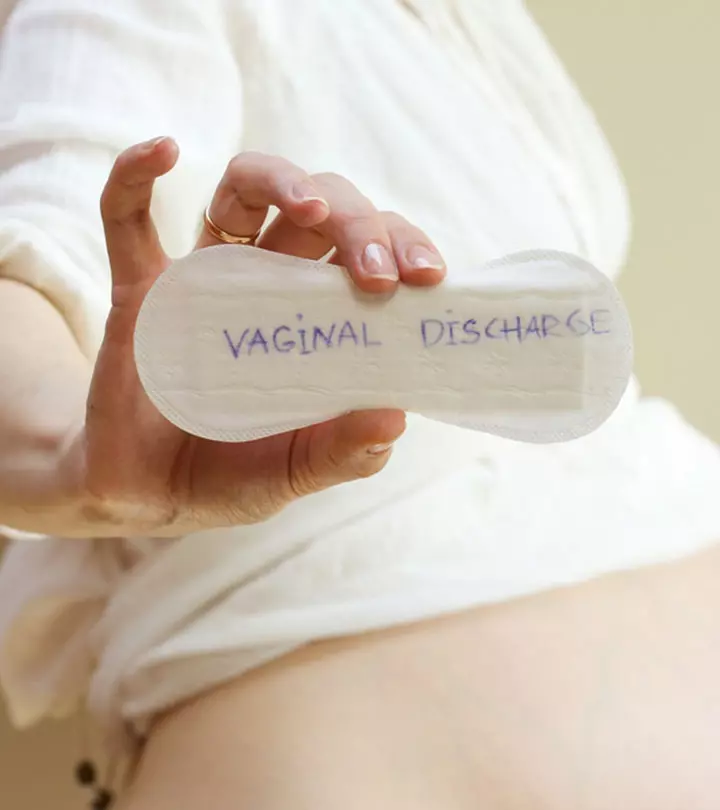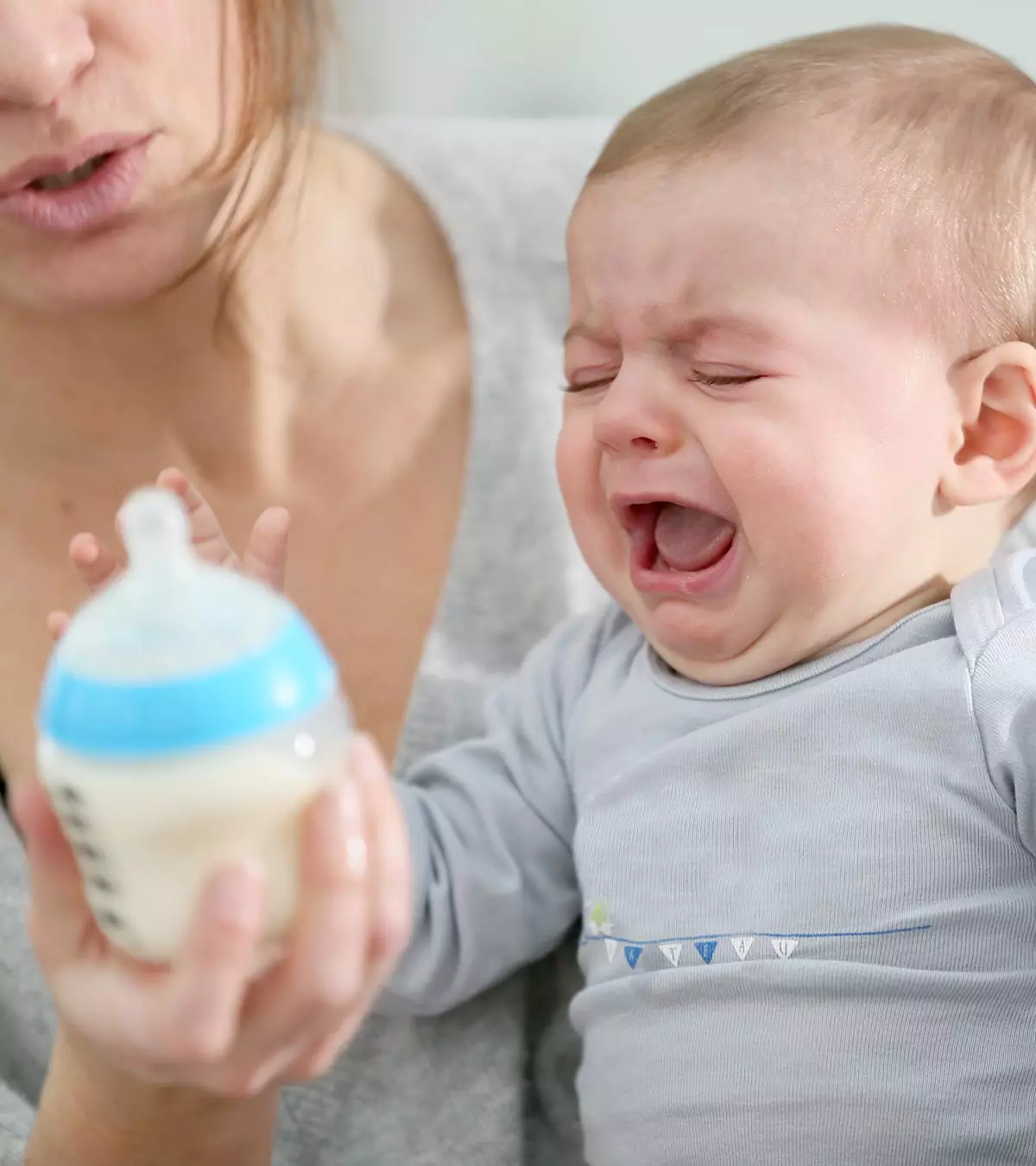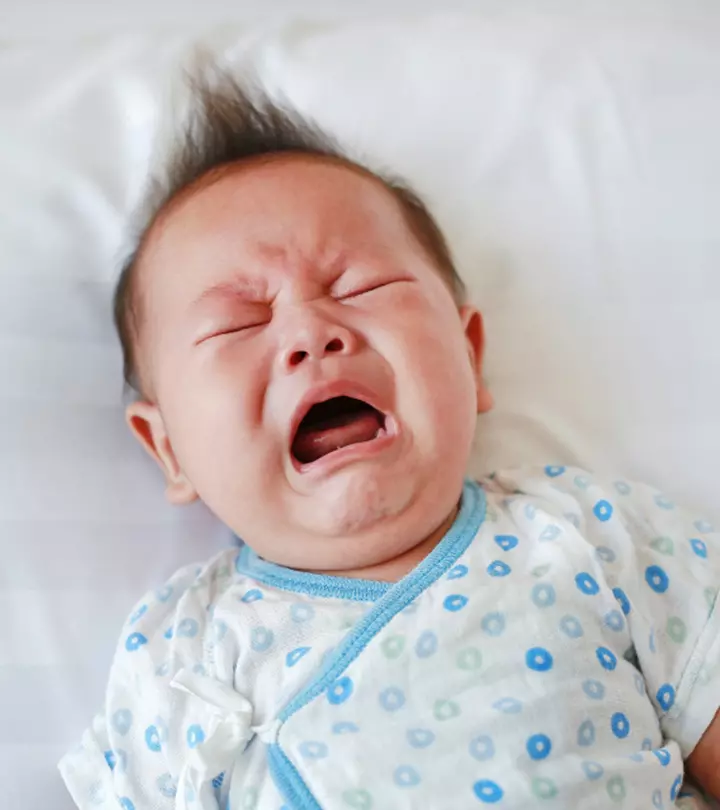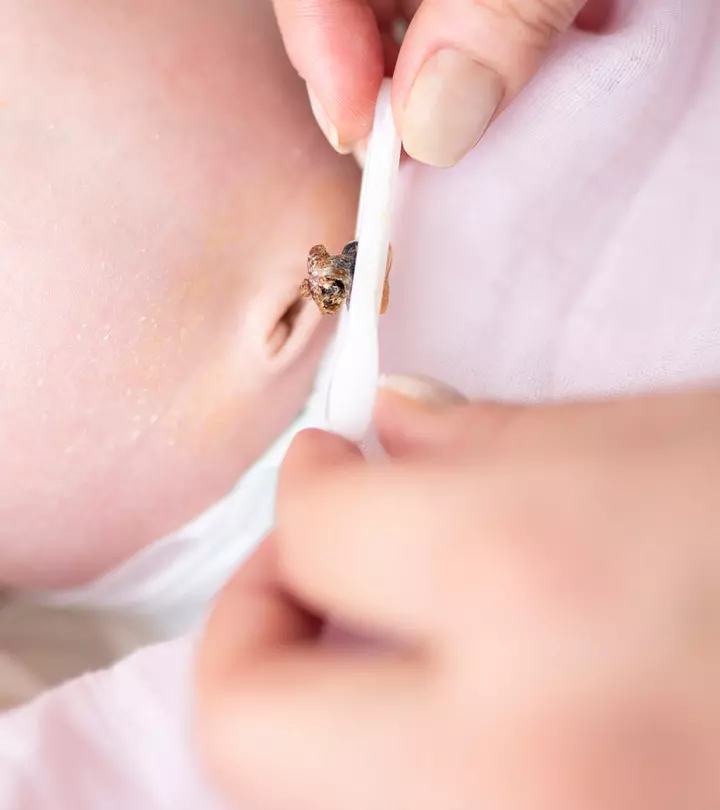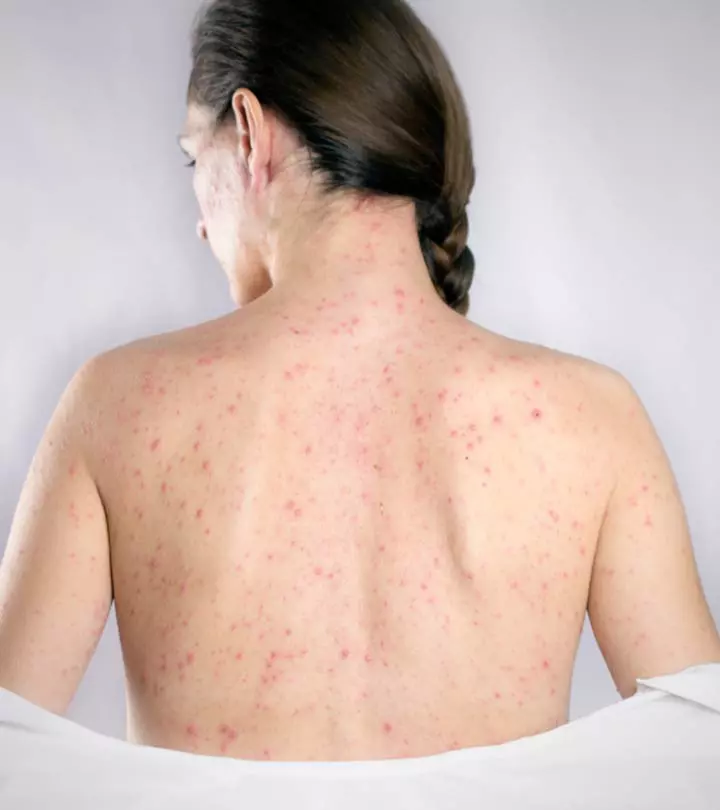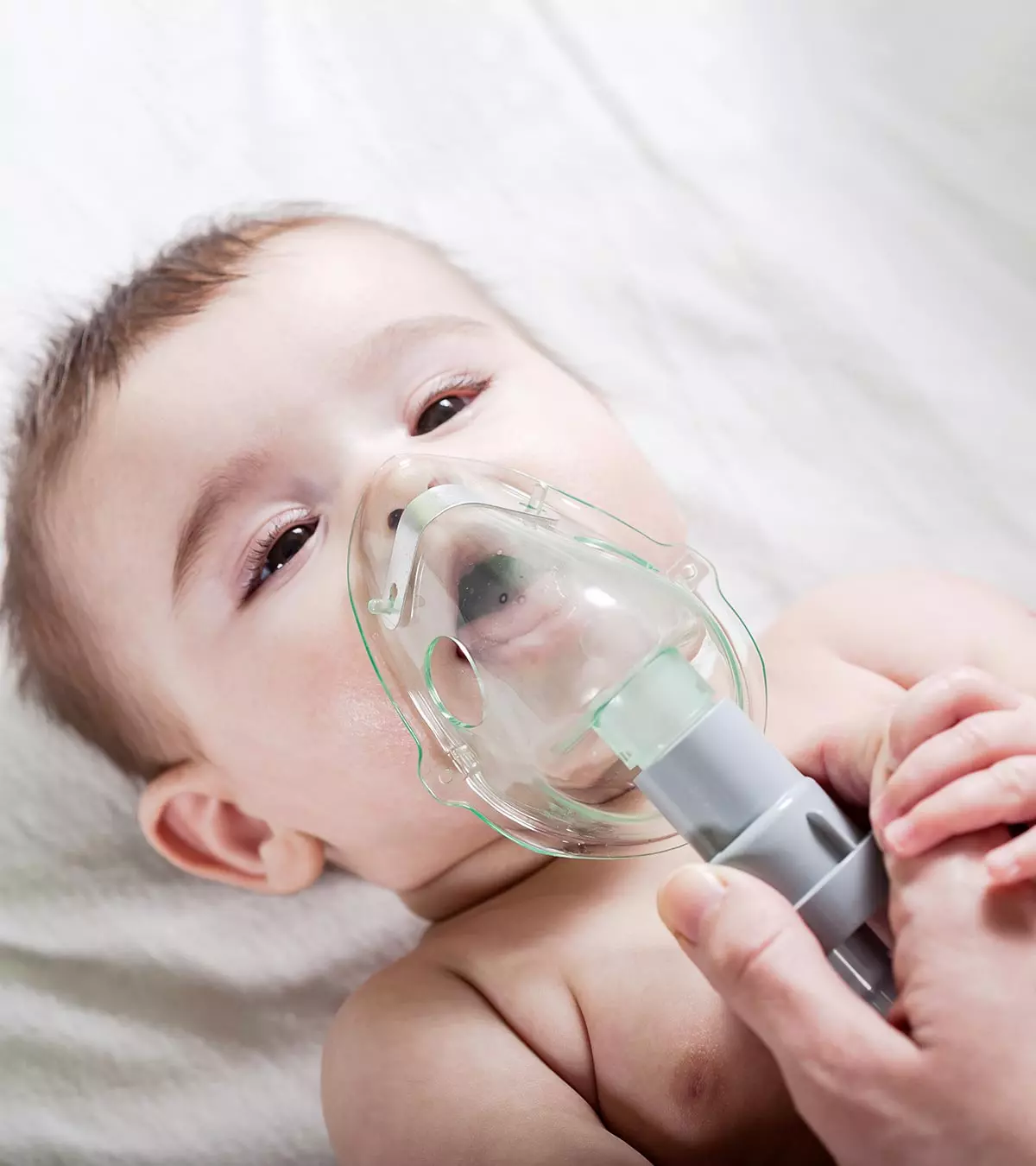
Image: ShutterStock
A nebulizer is a device that administers a drug as inhalable mist, letting the medicine reach the lungs better and work faster. Nebulizers for babies may be needed to treat or manage respiratory illnesses, which may not be curable through topical and oral medications.

If you intend to use a nebulizer, knowing the right procedure to use the device is essential to ensure the medicine is administered effectively. Read this post to learn about the different types of nebulizers, how they work, how they are different from inhalers, and tips to use a nebulizer carefully to administer medications to babies and toddlers.
Key Pointers
- A nebulizer converts liquid medicine into a fine mist delivered to the lungs quickly.
- Nebulizers come in a variety of shapes and sizes, depending on how they produce the mist.
- A nebulizer is used for babies as a respiratory support for cystic fibrosis, asthma management, and treatment of other chronic respiratory infections or illnesses.
- Using the nebulizer at the same time every day and avoiding its use when the baby is crying are a few best practices to follow.
What Is A Nebulizer And How Does It Work?

A nebulizer is a device that converts liquid medicine into a fine mist that is inhaled and delivered across the respiratory system, to the lungs (1). It is commonly used for providing aerosol therapy to children.
The nebulizer has three basic components: an air compressor, a medicine cup, and a mouthpiece or a mask – used for infants. Add a few drops of the medicine into the medicine cup, turn on the air compressor, and place the mask on the baby’s face to deliver the medicine in the form of a mist that can be inhaled.
A nebulizer thus allows the drug to reach parts of the respiratory system directly.
Are Nebulizers The Same As Inhalers?
No, they are different, although their primary function remains the same, which is delivering medicine in the form of inhalable mist. The following table lists the differences between nebulizers and inhalers (medical term: metered-dose inhalers) (2):
| Nebulizer | Inhalers |
|---|---|
| Uses electricity to convert the medicine into a mist Recently a new nebulizer was launched that is very small and battery-operated. | Needs no electricity |
| Can deliver any quantity of medicine | Delivers a small dose of medication at a time |
| It can be used with a wide variety of medicines | May not work with all types of medicines |
| Suitable for infants | Not suitable for infants, unless used with a spacer |
Inhalers require coordination between the press of the inhaler pump and inhalation. It means the baby needs to inhale at the same time as a parent presses the inhaler pump to release the medicine. It is nearly impossible for a baby to time their breathing. Thankfully, a device called a spaceriContainer with a mouthpiece at one end and a hole for the inhaler at the other end. can make the use of an inhaler easy.
A doctor will decide what works best for the baby depending on the age of the baby, their medical condition, and the medicine to be delivered. Ultimately, nebulizers are more complex than inhalers, although you get more options with a nebulizer.
With the risk of COVID, doctors have been advising the use of a spacer rather than a nebulizer, because nebulizers cause more aerosolizationiDispersion of liquid or other substances into the air in the form of a fine mist. and increase the risk of droplet spread and contamination.
Types Of Nebulizers

The following are the different types of nebulizers depending on how they create the mist:
- Jet nebulizer: It contains an air compressor with a motor that includes a piston. The piston moves to compress the air in a chamber. The compressed air then moves through the liquid medicine at a high velocity, which converts the liquid into a fine mist. Jet nebulizers are quite common in hospitals as they are inexpensive, and one pump can work multiple times.
- Ultrasonic nebulizer: A high-frequency ultrasonic wave vibrates a component, which is in contact with the liquid medicine. The rapid vibrations turn the drug into a mist. Ultrasonic nebulizers are silent and portable (due to battery power), but also expensive when compared to jet nebulizers. These nebulizers, however, produce smaller particles, and therefore medication can penetrate deeper into the lungs in smaller airways.
- Vibrating mesh nebulizer: These also use ultrasonic wave technology but evaporate the liquid better. Vibrating mesh nebulizers may increase the temperature of the medicine and may not be recommended for all types of medications.
- Mechanical nebulizers: They need no power to operate. The user winds a spring at the bottom of the machine, and as the spring releases itself, it pressurizes the liquid and turns it into a mist. Mechanical nebulizers are seldom used.
The type of nebulizer needed depends on factors like the medicine, dosage, and frequency of medication.
The next section tells you why an infant may need a nebulizer in the first place.
When Is Nebulizer Used For Babies?
A baby can need a nebulizer when they have the following conditions, which require delivery of the medicine into the respiratory system:
- Chronic respiratory conditions: Genetic ailments that cause chest congestion in babies can require repeated delivery of medication through an infant nebulizer. Examples of such conditions are asthma and cystic cystic fibrosisiA genetic disorder affecting the lungs, pancreas, and digestive system by blocking the airways and organ ducts with mucus. (3).
- Lower respiratory system infections: Several respiratory tract infections, bronchiolitis infection (inflammation of the bronchioles), and bronchitis infection (inflammation of bronchial tubes) can cause severe colds and coughs in babies. These conditions can require the delivery of medicine into the lungs through a nebulizer (4).
- Upper respiratory system infections: Nebulizers are also useful in administering medicine to the upper parts of the airways. A few examples are infections such as croupiA viral respiratory infection that causes inflammation of the upper airway, leading to breathing difficulty. and epiglottitisiInflammation of the epiglottis, the cartilaginous tissue at the back of the tongue, due to infection, injury, or diseases. , which affect parts of the throat namely the larynx and epiglottis (5).
A nebulizer can vaporize different types of medicine depending on the treatment required. Always consult your child’s pediatrician to know if a nebulizer is suitable for their condition and for guidance on medications and dosages.
What Medicines Are Used In A Nebulizer?
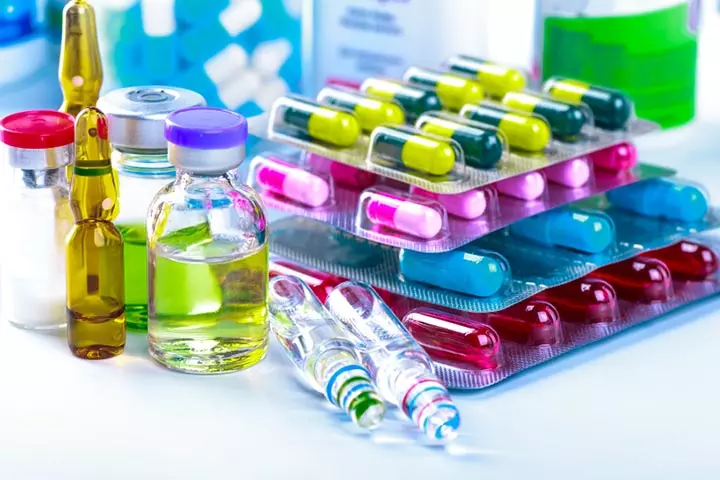
A doctor can prescribe a wide variety of medicines for delivery through a nebulizer. These include antibiotics, airway relaxants, and corticosteroids to reduce inflammation. AdrenaliniThe hormone responsible for fight or flight response and relaxation of muscles to relieve airway obstruction. inhalations are used in a hospital setting for severe croup and airway obstruction. The baby can also inhale plain saline water mist to moist their airways when they are dry. Most doses of the medicine would be administered at home as per the doctor’s prescription. Therefore, parents must know the right way of using a nebulizer.
 Quick tip
Quick tipHow To Use A Nebulizer With An Infant?
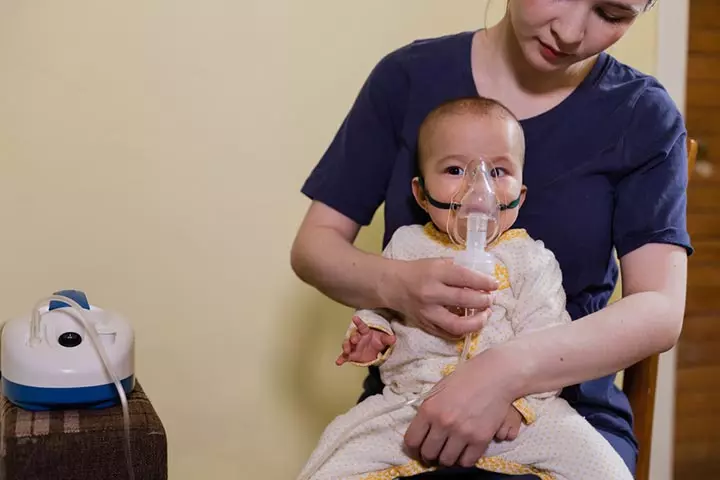
Follow these steps when administering medicine to the baby through a nebulizer:
- Wash your hands and collect all the things you will need – mask, medicine, dropper, the medicine cup, attachment tube, and the nebulizer machine itself. Place the device on a flat surface.
- Sit in a comfortable place and hold the baby on your lap in an upright position. Toddlers can sit by themselves.
- Give a book or a toy to keep the baby/toddler busy. It is important to prevent the little one from squirming while getting the medicine.
- Once the respiratory therapy equipment and the baby are all set, connect the tube to the nebulizer and the medicine vaporizing cup to it. Use a dropper to add saline drops for the baby into the medicine cup. If the medicine requires dilution with saline, then use another dropper to pour drops of saline into the medicine cup. Close the cup once the medicines are added. Hold the cup upright.
- Attach the mask to the nozzle on the medicine cup. Put the mask on to the baby’s face while the baby sits upright in your lap or is held upright in your arms.
- Turn on the nebulizer. The baby should breathe normally for five to ten minutes or for the time stated by the doctor. Keep the baby distracted by showing them their favorite toy or reading from a book. It will help them stay calm and breathe in properly and allow the entire medicine to reach the lungs.
- A nebulizer mask comes with straps that go around the face and keep the mask in its place. Nevertheless, hold the mask with your hand too, to prevent it from falling away accidentally.
- Once the dose has been administered for the required time, turn off the nebulizer.
- Remove the mask to end the procedure. If there is some mist still left in the cup, then let it out.
- Disassemble the tube, mouthpiece, and the measuring cup.
- It is important to note that you should attach the mask. Some people use the device without the mask, but delivering the aerosol treatment in this way leads to a waste of most of the medicine dose.
 Quick tip
Quick tipIt is essential to clean the tube, mouthpiece, and medicine cup every time after using the nebulizer.
How To Keep A Nebulizer Clean?

You will only need to clean the mask/mouthpiece, and the medicine cup. There is no need to clean the tube every time but it needs cleaning every now and then. The nebulizer parts and accessories should be rinsed after every use and sterilized/disinfected once a week. Below are the steps to rinse and disinfect the nebulizer components:
Rinse:
- Separate the mask and medicine cup from the tube. If there are additional adapters or components for attachment of the mask to the medicine cup, then you need to rinse them as well. Store aside the tube and the nebulizer since they do not need cleaning. Also, remove the strap from the mask.
- Soak the mask, the medicine cup, and adapters in soapy water for 10-15 minutes. You can use standard dishwashing soap.
- Rinse the components preferably under warm water for 30 seconds before leaving them on a towel to air dry.
Sterilize:
- Rinse the nebulizer parts. Submerge the components in a vessel of water and boil for 5-10 minutes. You can also sterilize in a microwave-based sterilizer that you use to disinfect baby’s bottles and pacifiers. An alternative is to sterilize in a dishwasher with a water temperature of 158ºC, for 30 minutes.
- If the nebulizer parts cannot be boiled, then you can use a solution of one part of distilled water and three parts hot water. Soak the components in it for one hour. Other alternatives are soaking in 70% isopropyl alcohol for five minutes and then in 3% hydrogen peroxide solution for 30 minutes. You can also use a solution of one part household bleach and 50 parts of water. Soak the components for three minutes.
- If you are using non-boiling methods for sterilization, then rinse the components under running warm water for a couple of minutes before leaving them to dry.
Avoid sterilization if the manufacturer does not specify it.
Boiling and contact with disinfecting fluids may damage the nebulizer components if it is not designed for it. In such cases, clean and sterilize using the manufacturer’s recommended methods.
All the rinsed and sterilized parts of the nebulizer should be dry before their use. Assemble all the components and have a dry run of the nebulizer (without medicine) to remove any minuscule levels of moisture left inside it. Disassemble and store the parts in a clean and dry place.
Using the nebulizer with a baby can be a bit challenging. In the next section, we give you tips to get the most out of nebulizer usage for a baby.
 Quick tip
Quick tipTips For Nebulizer Use With Infants
Here are some recommended best practices when using a nebulizer for an infant:
- Use the nebulizer at the same time each day. It will allow the infant to consider nebulizer use as part of their daily routine and hence they are less likely to resist using it.
- Do not use a nebulizer when the baby is upset or crying. They will not inhale adequate mist, and the medicine will get wasted.
- Create a friendly image of the nebulizer, especially for a toddler. Use words like “superhero mask” or “superpower mask” to make the little one feel more comfortable. Give a name to the nebulizer and allow the toddler to put stickers on it. It makes the nebulization therapy session less of a respiratory treatment and more of an activity for the child.
- Make nebulizer time productive by reading books and playing a mini-game. Keep a toy exclusive for nebulizer time.
- Involve older toddlers in the process. Encourage them to hold their mask, switch on the nebulizer machine, and watch how the mist forms within the medicine cup. It lays the foundation for self-use, which the toddler needs to do as they grow older.
Desiree Macke, a mother from Southern California, shares her experience with a nebulizer when her son Marcus had a respiratory syncytial virus (RSV) infection. She says, “To top off the sickness, we have to administer oxygen treatments via a nebulizer two to three times a day. Marcus hates the process, and I’m not the biggest fan of it either. During the treatment, to make things easier for all of us, we placed Marcus in a car seat. He’s a wiggly little worm, and holding him still for a full 10 minutes while trying to hold a noisy tube-blowing mist in his face is next to impossible. To keep him somewhat occupied and entertained, we play a few baby videos. Most of the treatments are done right before nap times (i).”
Frequently Asked Questions
1. At what age can a baby use a nebulizer?
If necessary, a nebulizer can be used to deliver medicine to the baby soon after birth, depending on the baby’s condition (6).
2. What can I put in my baby’s nebulizer for congestion?
Nebulization with hypertonic salineiSodium chloride solution with a higher concentration of sodium than found in normal blood serum. is likely safe and effective for congestion relief in babies (7).
3. Can I use just water in a nebulizer?
Yes, because a nebulizer can turn any liquid into a mist, you can use it to make a water mist. Although not as effective as medication, water mist might help calm the nasal passage.
4. How often should I nebulize my child?
Depending on the medication and the respiratory disorder, your child’s doctor may advise you to nebulize them for 10-15 minutes three to four times per day as needed (8).
5. What are the side effects of using a nebulizer?
The most common side effects of nebulizer medication are rapid heartbeat, mild tremor (jitteriness), headache, dry mouth, and glaucoma (in rare cases). If these side effects last longer than 30 minutes, consult a doctor immediately (9).
6. Can a nebulizer help with a stuffy nose?
Depending on the medication, a nebulizer can be used for severe cases of a stuffy nose (nasal congestion).
7. What is the difference between pediatric and regular nebulizers?
There is no mechanical difference between a pediatric and a regular nebulizer except for a pediatric nebulizer with a kid-friendly design. For example, it has colorful and fun animal shapes, making it less intimidating to children and less self-conscious about their illnesses.
8. Which is better: a nebulizer mask or a mouthpiece?
According to a study, patients who used a nebulizer mouthpiece had an increased volume of exhaled air during a forced breath than when using masks, indicating better lung functioning (12). However, your doctor can determine the suitability of the two accessories depending on your child’s age and requirements.
A pediatrician might recommend nebulizers for babies to treat a respiratory illness. It would be best if you used these devices with care; else, it might affect the effectiveness of the medications. Hence, get yourself trained by a medical professional to use it properly for your baby. Please read the user manual carefully before its first usage. Add the medication as prescribed by the doctor and attach the nebulizer gently to a baby’s face. Always check that your baby is comfortable during the process. Finally, clean and sterilize the device as the doctor and the manufacturer instructed.
Infographic: More Ways To Assure Safe Usage Of Nebulizers In Babies
It is essential to ensure that all safety measures are followed when using a nebulizer for babies. It is crucial to ensure that the total dose of medication reaches the child and there are minimum side effects due to errors in usage. The infographic below lists some more tips in this regard.
Some thing wrong with infographic shortcode. please verify shortcode syntax
Illustration: Nebulizers For Babies: How Do They Work?
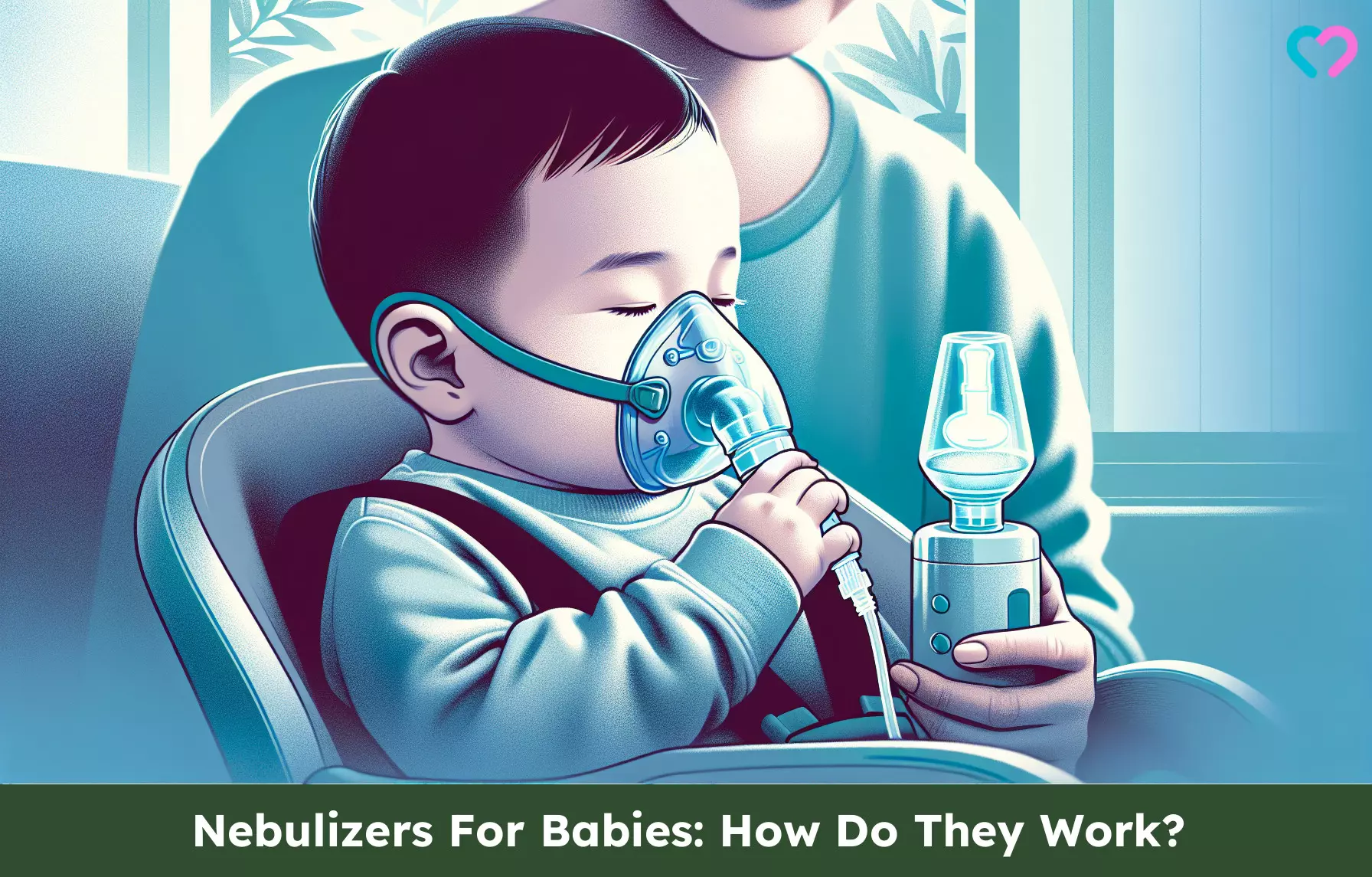
Image: Stable Diffusion/MomJunction Design Team
Personal Experience: Source
MomJunction articles include first-hand experiences to provide you with better insights through real-life narratives. Here are the sources of personal accounts referenced in this article.
i. RSV and the nebulizer;https://d-and-s-macke.blogspot.com/2013/01/rsv-and-nebulizer.html
References
- Your Child’s Asthma: Nebulizer Treatments; University of Rochester
https://www.urmc.rochester.edu/encyclopedia/content?contenttypeid=90&contentid=P01687 - Inhaler or Nebulizer: Which One Should My Child Use?; Johns Hopkins All Children’s Hospital
https://www.hopkinsmedicine.org/all-childrens-hospital/patient-families - Managing CF; Stanford Medicine
https://med.stanford.edu/cfcenter/education/english/ManagingCF.html - Treating Acute Bronchiolitis Associated with RSV; American Academy of Family Physicians
https://www.aafp.org/pubs/afp/issues/2004/0115/p325.html - Croup/Epiglottitis; The University of Chicago
https://pedclerk.uchicago.edu/ - P J Schweich et al. ; The use of nebulized albuterol in wheezing infants; NCBI
https://pubmed.ncbi.nlm.nih.gov/1513726/ - Linjie Zhang et al.; Nebulised hypertonic saline solution for acute bronchiolitis in infants; NCBI
https://www.ncbi.nlm.nih.gov/pmc/articles/PMC6485976/ - Rajiv Dhand et al.; The Role of Nebulized Therapy in the Management of COPD: Evidence and Recommendations; Tandofline
http://www.tandfonline.com/doi/full/10.3109/15412555.2011.630047 - Side effects of nebulised medication; My Lungs My Life; University of Edinburgh
https://www.mylungsmylife.org/topics/group-1/nebulisers/side-effects/ - Home Nebulizer; Cleveland Clinic
https://my.clevelandclinic.org/health/drugs/4254-home-nebulizer - How To Use A Nebulizer For A Baby; Campbell County Health
https://www.cchwyo.org/news/2025/august/how-to-use-a-nebulizer-for-a-baby/ - Kishida et al.; Mouthpiece versus facemask for delivery of nebulized salbutamol in exacerbated childhood asthma; NCBI
https://pubmed.ncbi.nlm.nih.gov/12095184/
Community Experiences
Join the conversation and become a part of our nurturing community! Share your stories, experiences, and insights to connect with fellow parents.
Read full bio of Dr. Elna Gibson
Read full bio of Rohit Garoo
Read full bio of Dr. Ritika Shah
Read full bio of Vidya Tadapatri






